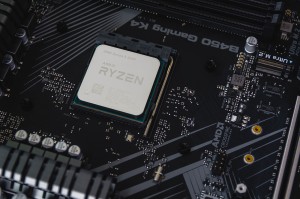One-stop industrial grade chip procurement service
In terms of products, computing and control chips are the largest product segment, with a share of more than 39%. In terms of application, this product is most often used in factory automation and control systems, with a share of more than 27%.
Future fast-growing applications in the pan-industrial chip segment include network equipment, commercial aircraft, LED lighting, digital tags, digital video surveillance, climate monitoring, smart meters, photovoltaic inverters and human-machine interface systems. In addition, various types of medical electronics (such as hearing aids, endoscopes and imaging systems) are also contributing to the growth of this market. Because of the prospect of this market, some leading semiconductor manufacturers in the digital field have also laid out industrial semiconductors. With the development of industrial digitalization, new technologies such as artificial intelligence have also started to be integrated into the industrial sector.
At present, the global industrial semiconductor market by Europe, the United States and Japan and other countries of the giant enterprises occupy a monopoly, its overall level and market influence leading advantage is obvious. Research institute IHS Markit announced the 2018 industrial semiconductor top 20 manufacturers list, the U.S. manufacturers accounted for 11 seats, European manufacturers accounted for 4 seats, Japanese manufacturers accounted for 4 seats, only one Chinese company Woodland was shortlisted.
Industrial chips are in the basic part of the entire industrial architecture, solving the basic problems of sensing, interconnection, computing, storage and other implementation issues, and play an important role in industrial production. Industrial chips mainly have the following characteristics.
First, industrial products are in a long-term extremely high / low temperature, high humidity, strong salt fog and electromagnetic radiation in a harsh environment, the use of harsher environments, so industrial chips must have stability, high reliability and high security, and have a long service life (to power, for example, requires industrial chip application failure rate of less than one millionth, certain key products require "0 "lapse rate, product design life requirements 7 * 24 hours, 10-20 years of continuous operation. (While the consumer electronics failure rate of three thousandths of a percent, the design life of 1-3 years). Therefore, the design and manufacturing of industrial chips to ensure strict yield control, requiring hundreds of millions of chips with quality consistency assurance capabilities, and some industrial-grade products even need to customize a dedicated production process.
Second, industrial chips to meet the custom needs of different products, and therefore do not have the characteristics of consumer chips to pursue universal, standardized, price-sensitive. Industrial chips are often diversified categories, single category small size but with high value-added, requiring close integration of R & D and applications, to research and development for application scenarios, and form solutions with the application side, so application innovation is as important as technological innovation. The entire industrial chip market is not easily affected by fluctuations in the boom of a single industry. Therefore, price fluctuations are far from the changes in digital chips such as memory chips and logic circuits, and the market fluctuations are relatively small. The world's largest industrial chip maker Texas Instruments industrial class product line up to more than 10,000 kinds, product gross profit up to more than 60%, while the annual revenue growth is also relatively stable.
Third, the main development model of industrial chip companies for the IDM model. Industrial chip performance varies greatly, using many special processes, such as BCD (Biploar, CMOS, DMOS), high-frequency areas and SiGe (silicon germanium) and GaAs (gallium arsenide), a lot of performance in the self-built production line to reflect the better, so often need to customize the process and packaging, and design and process depth of integration to meet the needs of special industrial application scenarios. The IDM model can enhance product performance and reduce production costs through customized manufacturing processes, thus becoming the preferred development model for the world's leading industrial chip companies. Of the global industrial chip sales revenue of nearly $48.56 billion, $37 billion in revenue is contributed by IDM companies, and 18 of the world's top 20 industrial chip companies are IDM companies.
Fourth, the market concentration of industrial chip companies is high, and the situation of the big is stable for a long time. Due to the overly fragmented nature of the industrial chip market, large enterprises with certain integration capabilities, dedicated processes and production capacity tend to occupy a major market share, and continue to grow larger and stronger through acquisitions and advantages. In addition, due to the industrial chip industry generally slow product updates, resulting in fewer new companies entering this field, the industry monopoly pattern continues to strengthen. Therefore, the whole industrial chip market pattern shows the characteristics of "the big is always big, the market monopoly effect is significant". At present, the world's top 40 industrial chip companies occupy 80% of the total market share, while the U.S. industrial chip market, the top 20 U.S. manufacturers contributed 92.8% of the market share.
China's industrial chip development status
With China's vigorous promotion of new infrastructure and industrial Internet, the scale of China's industrial chip market will also see rapid growth. By 2025, it is expected that the annual demand for chips in China's electric power grid, rail transportation, energy and chemical, municipal and other industrial fields will be close to RMB 200 billion. According to the market size of China's chip industry in 2025 exceeded 2 trillion estimates, the demand for industrial chips alone accounted for 10%. Among them, the total demand for industrial computing and control chips, analog chips and sensors accounted for more than 60%.
In contrast, although China is a large industrial country, but in the basic chip link is far behind. At present, China has a number of industrial chip companies, the number is not quite, but the overall fragmentation, did not form a synergy, comprehensive competitiveness is weaker than foreign manufacturers, and products are mainly concentrated in the low-end market. According to recent data from IC Insights, Taiwan's Industrial Technology International Strategy Development Institute, the top 10 mainland IC design companies in 2019 are, in order, Heisi, Ziguang Group, Howe Technology, Bitmain, ZTE Microelectronics, Huada Integrated Circuit, Nanrui Smartcore Microelectronics, ISSI, Zhaoyi Innovation, and Datang Semiconductor. Among them, the seventh ranked Beijing Smartcore Microelectronics, is the only one in this list of revenue mainly from industrial chip manufacturers, the other are mainly consumer chips for civilian use.
In addition, there are some local design and manufacturing of industrial-grade chip manufacturers are not reflected in this list, especially in the sensor and power devices, some local companies have made a breakthrough. Such as Goer is the leading domestic sensor field, in the electro-acoustic industry micro electro-acoustic components and consumer electro-acoustic products in the development and manufacture of a very competitive. In terms of power devices, local enterprises, represented by CNMC and BYD, have achieved good results in the field of IGBT, realizing the domestic replacement of IGBT for electric vehicles and high-speed rail.
Overall, China's local industrial chip manufacturers, products are still mainly power devices, industrial control MCU, sensors, while in other major categories of industrial chips, such as high-performance analog products, ADC, CPU, FPGA, industrial storage, etc., there is still a large gap between China's enterprises and the international big manufacturers.
For a long time, the construction and development of China's industrial systems have taken priority over industrial chips, and the chips used in industrial equipment are mostly procured from large foreign manufacturers. Before the occurrence of trade frictions between China and the United States, local manufacturers were given few trial opportunities, which to a certain extent hindered the development of local industrial chips and was also detrimental to the improvement of local industrial anti-risk capabilities. Industrial chips are different from consumer chips, with high overall performance requirements, relatively long R&D cycles, high application stability and low replacement frequency. After the international chip supply chain is cut off or restricted by non-market factors, it is difficult to find suitable substitutes within a short period of time due to the low experience of large-scale commercialization of local industrial chips as well as trial and error and iteration, thus affecting the operation of industrial systems. On the other hand, in the context of the overall domestic economic downturn, traditional industries need to cultivate new industrial growth points, and the new infrastructure based on industrial chips is promoting the transformation and upgrading of industrial industries, but if the problem of stuck necks is not solved, it will directly affect the growth of the new industrial economy and restrict the steady advancement of the industrial power strategy. In view of this, China's local industrial chips need a larger development space and market, which is not only conducive to the development of the local chip industry, but also to the healthy and benign operation of the industrial system.








